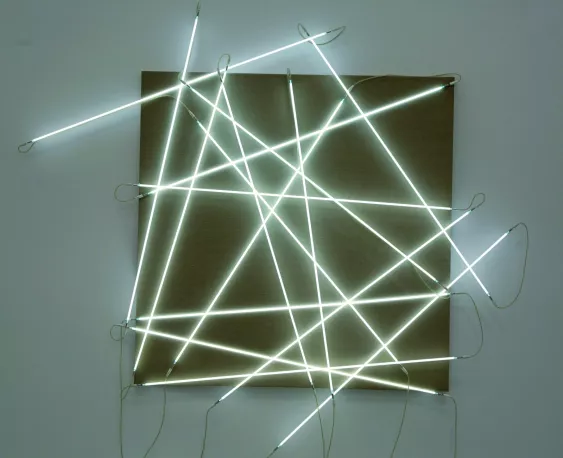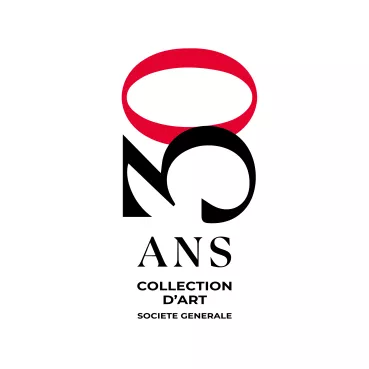
Zoom
The 16 Sides of the Square
2001
François Morellet
Mixed media
300 x 315 cm (carré 200 x 200)
Canvas on wood, 16 tubes of white argon
In this work, he uses the empty space of the canvas to place “a system” of simple elements following the principle of “battleship game”. The coordinates of this system are provided by random numbers drawn from a telephone directory. For each pair of random numbers, he associates coordinates on an imaginary grid of the canvas, with a white neon line equal to one side of the square of the canvas. The artist thus lets chance determine the realization of the work, which nevertheless develops a great aesthetic attraction.

Born in 1926 in Cholet, France
Died in 2016 in Cholet, France
Self-taught visual artist and researcher, François Morellet explored geometric abstraction through paintings, sculptures, and installations for over six decades. Using a variety of materials – he introduced neon into fine arts as early as 1963 – he favored objectivity and strict control of the creative process. An expert in the creation of absurd geometric rules, he transformed abstraction into a magical world, with his humor reflected in the titles, often filled with wordplay and parodies.
Artwork of
François Morellet

Visit the Collection
Book a visitThe visit of the Collection is open to you! Come alone, in a group or on a school outing !
Reservation is mandatory in order to offer you a guided tour, at La Défense or by videoconference.



